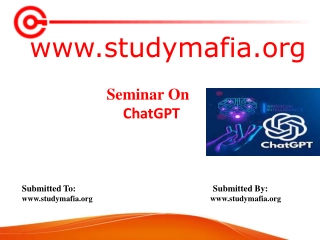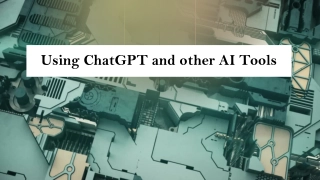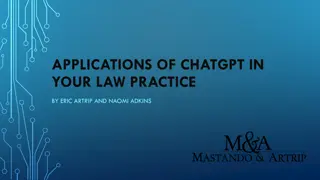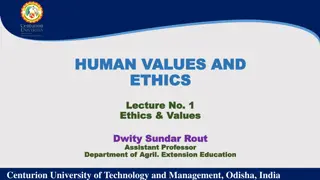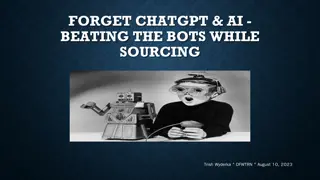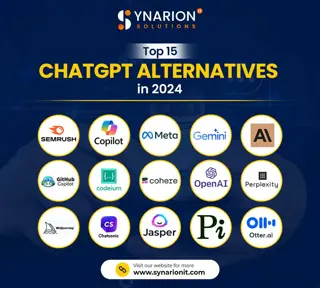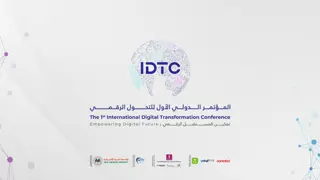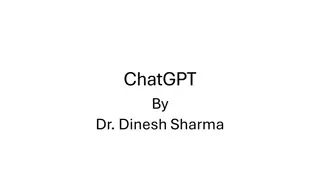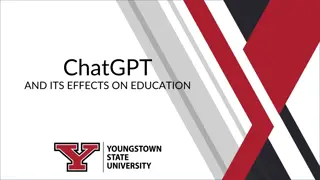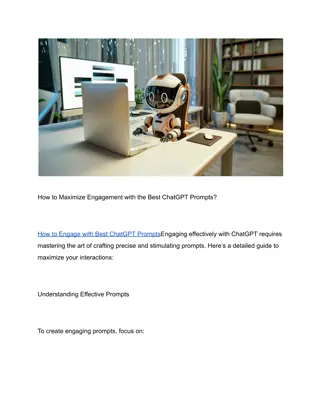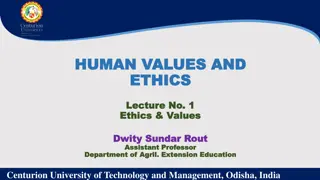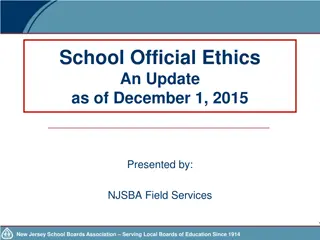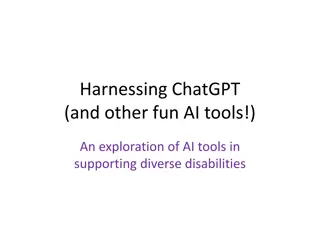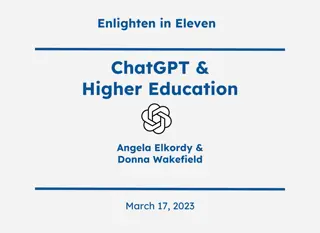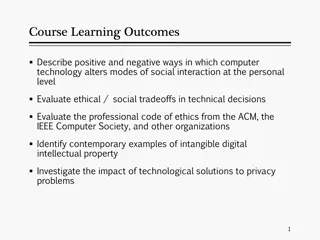AI Ethics in ChatGPT and Education Transformation
Explore the impact of AI-based ChatGPT on education, from personalized learning to academic integrity. Delve into the benefits and risks, including ethical concerns, in utilizing AI chatbots for educational purposes. Discover how AI can revolutionize the educational system while addressing challenges in maintaining academic integrity and promoting ethical use of technology.
Download Presentation

Please find below an Image/Link to download the presentation.
The content on the website is provided AS IS for your information and personal use only. It may not be sold, licensed, or shared on other websites without obtaining consent from the author.If you encounter any issues during the download, it is possible that the publisher has removed the file from their server.
You are allowed to download the files provided on this website for personal or commercial use, subject to the condition that they are used lawfully. All files are the property of their respective owners.
The content on the website is provided AS IS for your information and personal use only. It may not be sold, licensed, or shared on other websites without obtaining consent from the author.
E N D
Presentation Transcript
AI Integrity and ethical use of ChatGPT and beyond Prof Ann H. Verhoef Dr Mariette Fourie Community of Practice for Academic Integrity (CoPAI)
ChatGPT3 is a conversational language model developed by OpenAI that uses Generative Pre-trained Transformer (GPT) architecture and is pre-trained using a large dataset of conversational text (not academic texts at this stage). It can be used for natural language processing tasks such as question answering, text completion, and conversation synthesis. ChatGPT3 is a powerful AI-based technology that can recognize natural language and generate intelligent responses. NB: HUMAN LIKE! It has the potential to revolutionize daily life by providing personalized recommendations and advice. ChatGPT3 can also be used to enhance MBA education by providing personalized, interactive learning experiences. (Source: ChatGPT-3 Complete Guide) ChatGPT - Advanced AI Chatbot by OpenAI (chat-gpt.org) Question: Do you give unique answers to each question? Answer YES
ChatGPT3 Benefits & Risks (International Journal of Information and Education Technology) Benefits for education (of AI CHATBOTS tools like ChatGPT3, Microsoft's Bing Chat, and Google s Bard): 1. Expert systems, natural language processing, speech recognition, and machine vision are a few examples of specific AI applications. (E.g., show text on glasses for deaf people) 2. Because of its adaptability and usefulness, AI has the potential to transform education by improving student learning, instructor productivity, and institutional efficiency. (E.g., compile multiple choice questions at least first drafts) 3. In the past years, several AI tools and software have been developed to revolutionize the educational system and improve the teaching and learning experiences. The applications of AI in education are wide- ranging, which include a) the personalization of learning platforms that adjust to specific student needs and b) the development of smart tutoring systems that provide real-time feedback and support. (E.g., radio station dj replaced by chatbot; tutors as well?) 4. AI can also help with administrative activities like scheduling and grading, freeing teachers' time to focus on instruction and student engagement. 5. AI tools can analyze large amounts of data to find patterns and trends in student performance. This can assist teachers in identifying areas where pupils require additional assistance and improve teaching tactics. 6. Since AI tools can analyze and understand natural language, these tools can be used as virtual assistants that can answer students' questions and provide academic support.
Risks and challenges for education (of AI tools like ChatGPT3): 1. Ethical concerns, promotion of academic dishonesty, depreciation of students creativity, and dependence on technology. (E.g., effects writing first, but in long term critical reading and thinking!) 2. Tlili et al. (2023) revealed that various issues, such as cheating and privacy misleading, might arise when ChatGPT is used in educational settings. 3. Regulations play a crucial role in ensuring that the usage of ChatGPT is safe, secure, and effective in educational settings. (NWU s Academic Integrity Policy & SOP for TL Integrity NB!) Academic Integrity Problems ChatGPT3 can provide tailored-made answers to any question each one unique. Students can use it in assessments, assignments, Hons-essays, Ms and PhDs. Researchers can use it in articles, books, etc. Difficult to detect! (Not even ChatGPT3 can detect its own work. Ask: Can you detect your own work in texts submitted to you? Answer: As an AI language model, I do not have the ability to detect or recognize my own work in texts submitted to me as I do not have a personal history or memory of the texts that I have generated.) Dangers quickly realised in academia many articles published. See CoPAI eFundi site for some of the latest: eFundi : CoPAI : ChatGPT (nwu.ac.za) (Help CoPAI to keep this updated send me related articles to add to this site)
ChatGPT3 and Academic Integrity in the NWU context: I asked ChatGPT3: How can one ensure academic integrity if you are able to help students with answers? ChatGPT3 answered: As an AI language model, it is important to always promote academic integrity and ethical behavior. Here are some ways to ensure academic integrity while helping students with answers: 1. Encourage students to attempt the problems themselves first: Before providing any answers, it is important to motivate and encourage students to attempt the problems themselves. Encourage them to use the resources available to them such as books, lecture notes or any other study materials. 2. Provide guidance, not answers: When helping a student, it is important to provide guidance rather than answers. For example, providing a step-by-step approach to solving a problem can be more helpful than a direct answer. This approach allows the student to understand the process and develop problem-solving skills. 3. Emphasize the importance of academic integrity: Reinforce the importance of academic integrity and ethical behavior, and the consequences of academic dishonesty. Explain to the students that the ultimate goal of education is to enhance their knowledge and skills in a particular field, and cheating or dishonesty undermines this goal.
4. Provide resources: Provide students with resources such as study guides, reference materials, and practice problems. These can help them to develop a better understanding of the subject matter and improve their problem-solving skills. 5. Use plagiarism detection software: If you are working in an online or digital environment, you can use plagiarism detection software to ensure that the students are not copying or cheating. Some examples of such software include Turnitin and PlagScan. 6. Set expectations: Clearly communicate the expectations and guidelines for academic integrity in your class or tutoring session. Make sure students understand what is allowed and what is not allowed, and the consequences of violating academic integrity policies. TWO IMPORTANT THINGS: 1. Assessments should be creative. What and how we assessments becomes increasingly important. 2. The illegal use of ChatGPT3 is a form of academic dishonesty and should be treated as such. If this is detected (hopefully through Turnitin), it should be reported like other academic integrity transgressions. The newly developed SOP for TL Integrity provides the framework to deal with it within the NWU in a fair and thorough manner. This is crucial see examples:
NWUs Standard Operating Procedure for Academic Integrity refers to AI and chatbots Cheating Cheating involves unauthorised use of information, materials, devices, technology, sources, or practices in completing academic activities. These can include i) use of sources beyond those authorised by the instructor in writing papers, preparing reports, solving problems, or carrying out other assignments; ii) acquisition, without permission, of tests or other academic material belonging to a member of the university faculty or staff; iii) engagement in any behaviour specifically prohibited by a faculty member in the course syllabus or class discussion, iv) work presented by a student as their own that originated (was generated) by means of artificial intelligence (e.g., ChatGPT and paraphrasing tools). Plagiarism The Academic IntegrityPolicy definitionof plagiarismis: 1) The use without appropriate acknowledgement of another s ideas, hardcopy or electronic texts, images, computer programmes, sounds, designs, performance, or any form of creative work as one s own work, including activities such as appropriating the knowledge,insights, processesresults, wording, or formulationof anybody else s (or an AI programme s)work. 2) Since the intention to deceive is a key notion in the understanding of plagiarism the findings in an investigation of plagiarism must be presented in a continuum ranging from strong intention to deceive (presenting the work as original and/or as the author s own) to weak intentionto deceive (careless writing and/or improper referencing. 3) Unconscionablelifting of text. In other words: Plagiarism is a type of cheating in which someone adopts another person s (or an AI programme s) ideas, words, design, art, music, etc., as his or her own without acknowledgingthe source, or, when necessary, obtainingpermissionfrom the author. The term plagiarism includes but is not limited to the use, by paraphrase or direct quotation, of the published or unpublished work of another person (or an AI programme) without full and clear acknowledgment. Plagiarism also includes the unacknowledged use of materialsprepared by anotherperson or agency engaged in the selling of term papers or other academicmaterials.


